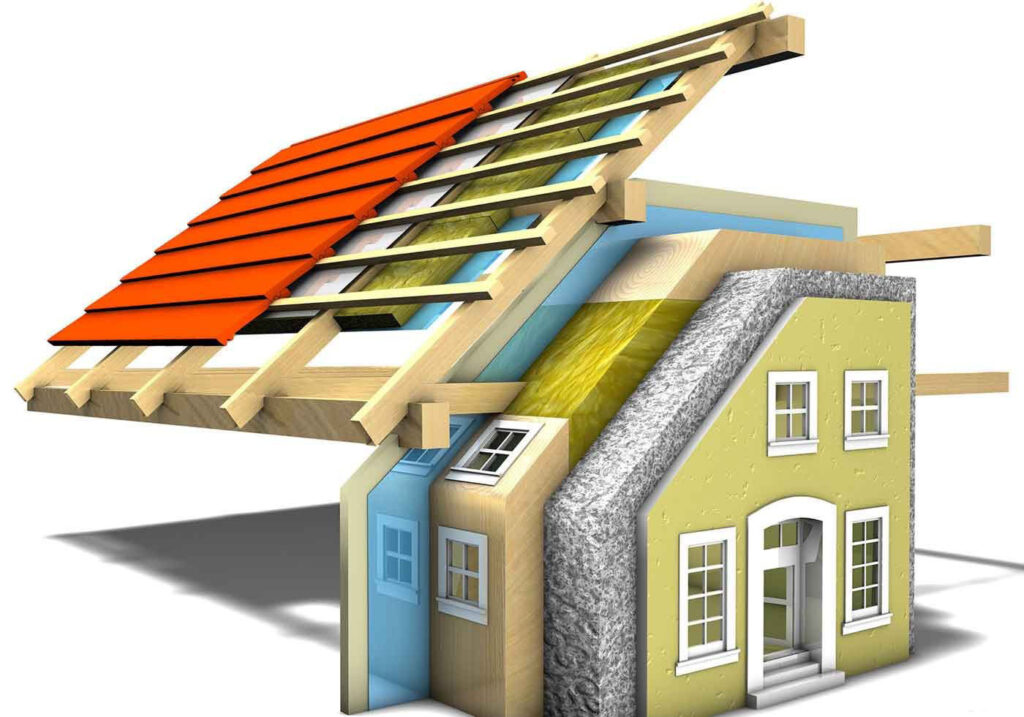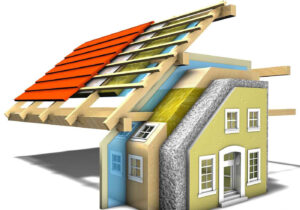Energy Saving: Discover New Generation Insulating Materials!

Insulation is essential to avoid heat loss and therefore, to have optimal heating consumption. Energy saving is also important in developing environmental conditions. New generation insulating materials also take an important place at this point. Poorly insulated walls represent 16% of the heat loss from a house, and a poorly insulated roof represents 30%. So there are different materials to insulate your home: mineral wools, synthetic insulators… The insulation of housing is now at the heart of builders’ preoccupations. Innovations in the field are continually evolving, as are these few new-generation materials.
- Aerogel, an ultra-light but very strong material
- Advantages
- Disadvantages
- Polyurethane, a high energy performance insulator
- Used fabrics for multifunctional insulation
- New generation paints to reflect infrared rays
- Permanent insulation with recycled glass
Aerogel, an ultra-light but very strong material
One of the latest new-generation insulators is aerogel: it is a very strong and light material. Indeed, it is derived from nanotechnology and consists of 99.8% air, making it the lightest and strongest insulation available! It comes in the form of a transparent gel, in which the usually liquid component has been replaced by gas, and it beats all records in terms of thermal insulation performance since it is for example 3 times more effective than wool glass for insulation. In addition, aerogel is fully recyclable and has the lowest thermal conductivity known to date.

Advantages
- Extremely fine material. It saves space in your home.
- Three times more efficient than conventional insulation.
- Highly incompressible, it resists weighty loads (up to 2000 times their weight).
- It is impermeable and does not require the application of a vapour barrier.
- It is easy to install, with no fibre rejection during cutting.
- The aerogel can withstand temperatures up to 200°C.
Disadvantages
- Aerogel remains primarily a chemical material, so the long-term effects are not yet known. Even if it can withstand high temperatures, it is not known whether it is non-toxic.
- The price is high.
- Because of the difficulty of producing it, aerogels need a lot of energy for the production.
- The fragility of the vacuum panel: Insulation is very sensitive to shocks and loses much of its insulating performance when pierced.
- The cost: it’s ten times more expensive than regular wool.
Polyurethane, a high energy performance insulator
Polyurethane is an insulator that is mainly used for flat roofs, floors and interior walls. It is a cellular material consisting of cells that store gas with low thermal conductivity, making it a High Energy Performance (HPE) insulator. Polyurethane is light, thin and has a good level of thermal performance as well as excellent durability. Also, it saves up to 100 times the energy required to manufacture it, so it is environmentally friendly. Finally, polyurethane emits a small amount of volatile organic compounds and has excellent fire resistance.
Used fabrics for multifunctional insulation
A company has created an effective insulator made from used fabrics, which has excellent thermal and even acoustic insulating capacity. This fabrics-based insulation has been shown to be two to three times more effective against summer heat than conventional insulation solutions, with a phase-out time of six to eight hours. It is treated against mould and insects and allows the wall to breathe. Also, the used fabrics are recyclable and have small ecological footprint: it is, therefore, the ultimate ecological insulation!
New generation paints to reflect infrared rays
It is now possible to insulate your home with insulating paint. Indeed, the composition of these particular paints contains ceramics and resins, which increases its insulating capacity. This paint also acts on the conductivity of the materials and improves the insulating capacity of the dwelling considerably. It has been proven that insulating paint can reflect up to 90% of the sun’s infrared rays, which are responsible for heating the facades and structures of homes.
Good to know
The new generation paints thus allow a temperature variation of 4°C and up to 30% energy savings.
Permanent insulation with recycled glass
Insulation made from recycled glass can now be found in combination with other natural materials such as sand, dolomite and lime. This insulating material has the advantage of benefiting from a structure made up of small, completely hermetic glass cells, which allows it to have insulating capacities that are stable over time. Also, this material does not present harmful gases, and its inertia means that it never diffuses greenhouse gases. It also has a low thermal conductivity, which makes it particularly suitable for external insulation.
It also has a low thermal conductivity, which makes it particularly suitable for insulation from the outside.
If you want to see more useful information about different categories, please visit our website.


